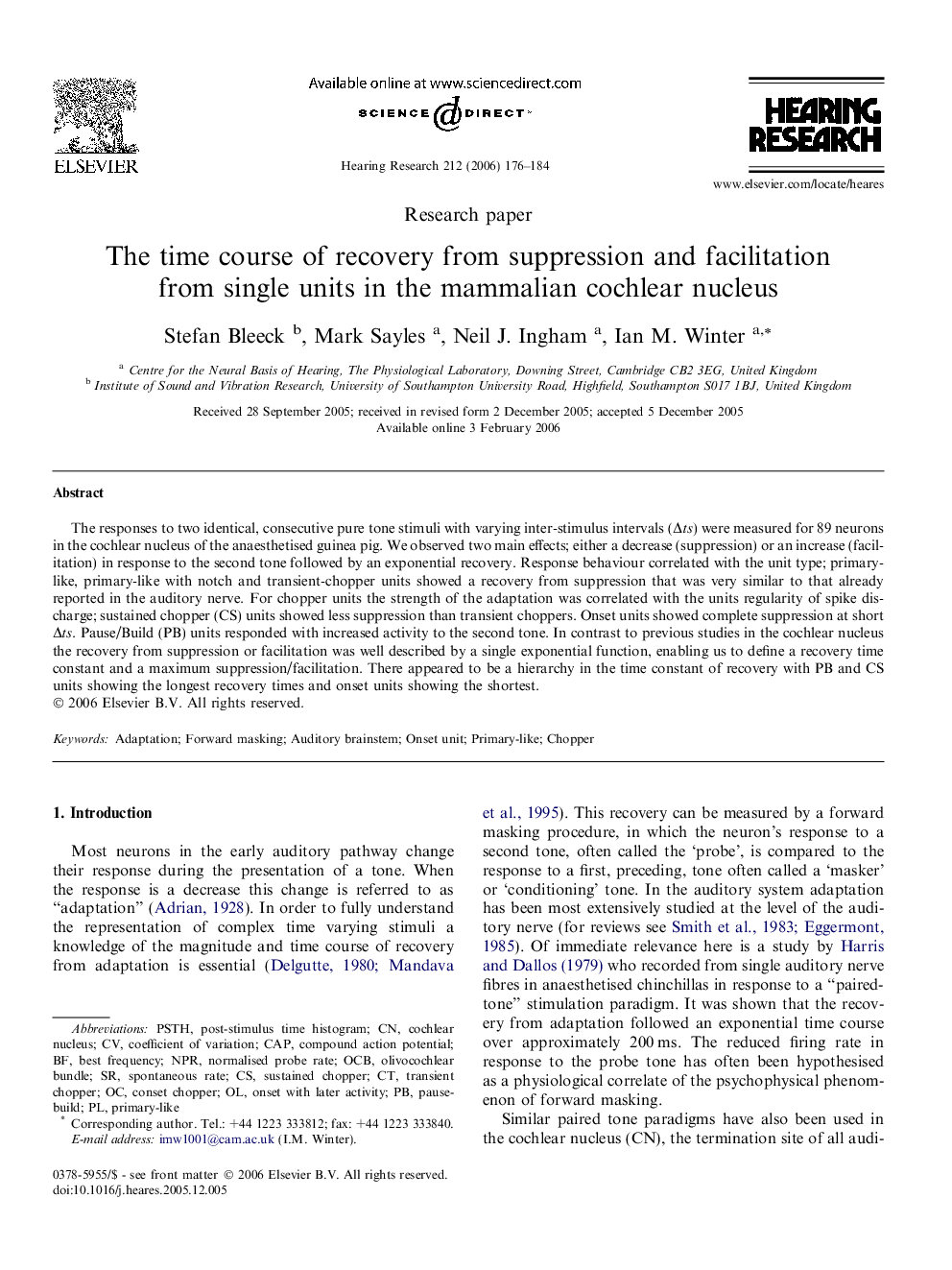| Article ID | Journal | Published Year | Pages | File Type |
|---|---|---|---|---|
| 4356468 | Hearing Research | 2006 | 9 Pages |
The responses to two identical, consecutive pure tone stimuli with varying inter-stimulus intervals (Δts) were measured for 89 neurons in the cochlear nucleus of the anaesthetised guinea pig. We observed two main effects; either a decrease (suppression) or an increase (facilitation) in response to the second tone followed by an exponential recovery. Response behaviour correlated with the unit type; primary-like, primary-like with notch and transient-chopper units showed a recovery from suppression that was very similar to that already reported in the auditory nerve. For chopper units the strength of the adaptation was correlated with the units regularity of spike discharge; sustained chopper (CS) units showed less suppression than transient choppers. Onset units showed complete suppression at short Δts. Pause/Build (PB) units responded with increased activity to the second tone. In contrast to previous studies in the cochlear nucleus the recovery from suppression or facilitation was well described by a single exponential function, enabling us to define a recovery time constant and a maximum suppression/facilitation. There appeared to be a hierarchy in the time constant of recovery with PB and CS units showing the longest recovery times and onset units showing the shortest.
